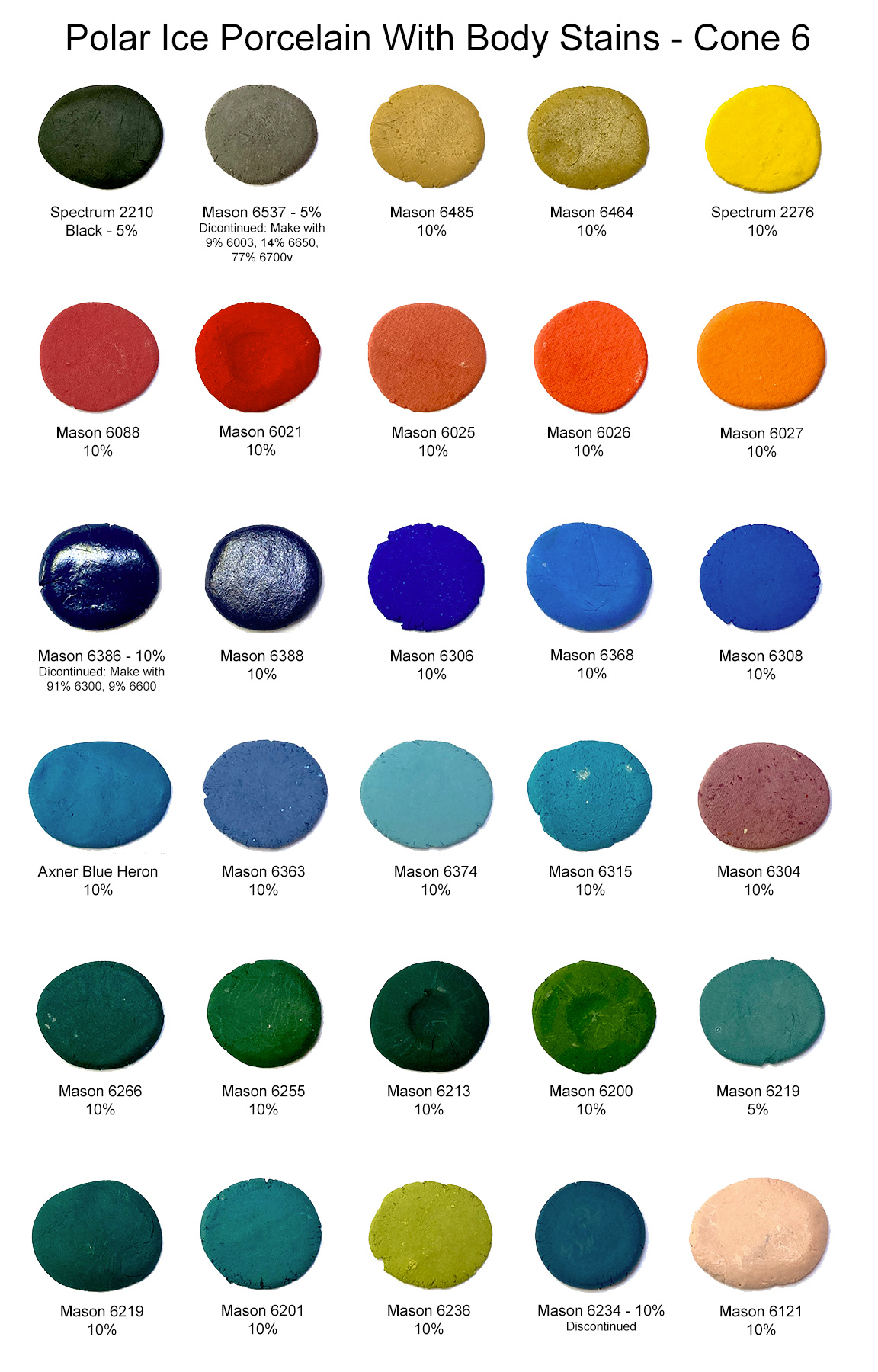Notes
Old Number: 8-B
Related Information
Stained Plainsman Polar Ice Porcelain - With Polishing (no glaze)

This picture has its own page with more detail, click here to see it.
Fired to cone 6. These are not glazed. Polar Ice is very vitreous and very white, an ideal host for stains. You can make a very similar porcelain yourself using the L3778D recipe (you just need a propeller mixer and plaster table). However, there is a caution: If a stain is refractory, it can reduce the firing shrinkage of the porcelain considerably. On the other hand, some stains will flux bodies and do the opposite. That means if high and low shrinkage stained versions of Polar Ice are laminated or marbled, the firing can create a tension-time-bomb that either exits the kiln cracked or cracks down the road. Of course, a polished surface would not be suitable for food or drink surfaces if the porcelain is being stained by an inclusion pigment containing cadmium or other known hazardous metal. This work is courtesy of Robert Barritz.
Polar Ice Porcelain with Body Stains - by Robert Barritz

This picture has its own page with more detail, click here to see it.
Robert has done really valuable work in this research, what an amazing range of color! Surfaces are unpolished and unglazed. All are fired to cone 6. Browns are missing, they can be made using iron oxide. For blacks, Mason 6600 is also effective. The blues can be intense using lower percentages than shown here, as low as 2% can be effective. There is an optimal amount for each stain, beyond that, increases in percentage bring little increase in color intensity. There is another reason to keep stain percentages to a minimum: To reduce the impact on body maturity (and firing shrinkage). Blues, for example, can significantly heighten the degree of vitrification, even melting the porcelain. If you plan to marble different colors, keeping stain percentage as low as possible is even more important, unless you can do fired shrinkage compatibility testing, for example, the EBCT test. Need to develop your own white porcelain? See the link below.
Stains in bodies will usually bleed color into glazes used over them, especially if the body is vitreous. This can be leveraged to create or amplify variegation. Strangely, stains can increase micro bubbles in transparent glazes.
Links











